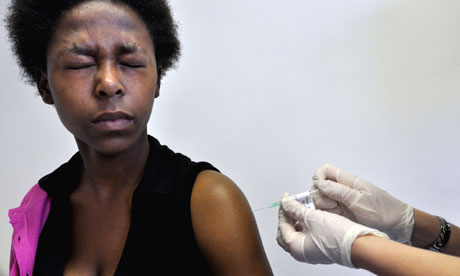Ever since HIV was first discovered, the search has been on to find a vaccine that could save the lives of those living with the virus. Now experts may be one step closer to making that vaccine a reality.
New research has revealed that women who have been infected with two different strains of HIV have more effective antibody responses than those who have only been infected once. The double infection response was even found to stop replication of the virus.
The condition is known as “HIV Superinfection,” occurring when a person receives two strains of HIV from two different sexual partners – and now it could be the key to fighting the disease in the future.
“These results suggest that potentially having two different antigens is a better way to stimulate a good immune response than just one,” said Julie Overbaugh, a member of the Hutchinson Center’s Human Biology Division and lead author on the study. “So now the question is: What should be in a good vaccine? These women may be giving us clues.”
The researchers studied a group of women living with HIV in Mombasa, Kenya, over five years. They followed the immune activity of 12 superinfected women and compared their results to a group of 36 singly infected. They also controlled for risk factors that could have affected the results.
On average, the superinfected women had 1.68 times more neutralizing antibodies than the singly infected women – and their ability to neutralize the virus from spreading was 1.46 times higher.
According to the U.S. Department of Health and Human Services, more than 1.1 million Americans currently live with HIV, and a new person gets infected with the virus every 9.5 minutes. With so many people afflicted, Overbaugh and her team are eager to get back into the lab to determine the science behind their findings.
“Now we really want to know why they had a better immune response,” Overbaugh said. “When you’re studying naturally infected populations, you can’t really demonstrate cause and effect. What we try to do is try to understand how this kind of response might have been generated. So we need to isolate [and study] the antibodies that these individuals generated.
